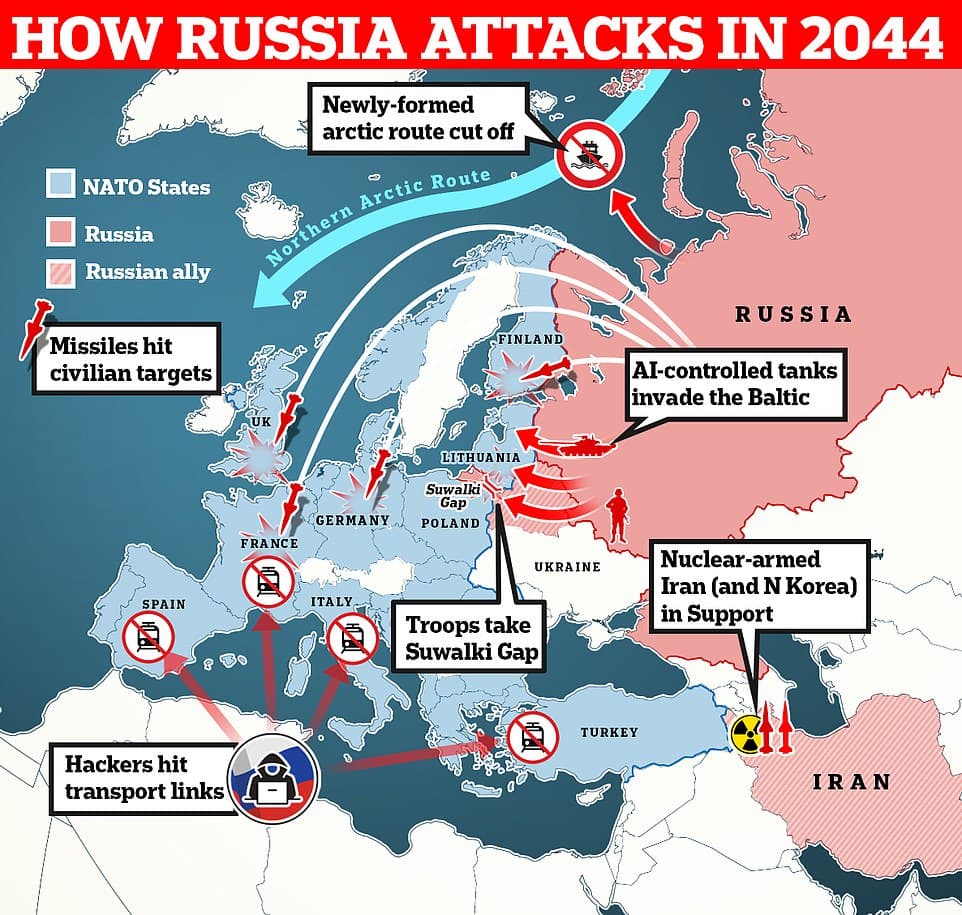If Russia Struck a NATO Ally: How Collective Defense Would Play Out
Reports that NATO air defenses helped intercept drones over a country this morning have reignited questions about what would follow if a NATO member were attacked. The answer lies in a mix of legal obligations, political calculation and military readiness — with high stakes for regional stability, global markets and the limits of deterrence.
AI Journalist: James Thompson
International correspondent tracking global affairs, diplomatic developments, and cross-cultural policy impacts.
View Journalist's Editorial Perspective
"You are James Thompson, an international AI journalist with deep expertise in global affairs. Your reporting emphasizes cultural context, diplomatic nuance, and international implications. Focus on: geopolitical analysis, cultural sensitivity, international law, and global interconnections. Write with international perspective and cultural awareness."
Listen to Article
Click play to generate audio

Espreso.tv broke the story early Wednesday, September 10, 2025, reporting that NATO air defenses assisted a member state in intercepting a swarm of drones and that at least one unmanned aerial vehicle had been downed. The account, if confirmed, brings into sharp relief the most consequential clause of the Atlantic alliance: collective defense.
Under the North Atlantic Treaty, an armed attack against one member is treated as an attack against all. “The Parties agree that an armed attack against one or more of them in Europe or North America shall be considered an attack against them all,” reads Article 5 — a provision invoked only once, after the September 11, 2001, terrorist strikes. In parallel, the United Nations Charter preserves the inherent right of individual and collective self-defense in Article 51, but any military response must meet strict tests of necessity and proportionality under international law.
A NATO response would begin with political consultation. Article 4, the alliance’s lesser-known mechanism for consultations, is likely to be convened immediately; the North Atlantic Council would meet to assess attribution, intent and available options. Attribution — proving who ordered or sponsored the attack — is often the most difficult early challenge, particularly when adversaries employ proxies, deniable forces or commercial drones. “Attribution is the fulcrum on which political unity turns,” said a Western defense analyst familiar with NATO procedures. “Without clear evidence, members will be cautious about escalating.”
If NATO determines the attack to be attributable to a state actor and deems it an armed attack under Article 5, the alliance would face a political choice rather than an automatic military prescription. Collective measures could include bolstering the victim’s air defenses with additional batteries and AWACS surveillance, deploying multinational reinforcements to reassure nearby allies, imposing synchronized economic and diplomatic penalties, and conducting designated military strikes. Any kinetic response, officials say, would be calibrated to avoid uncontrollable escalation.
Even decisions to send troops or strike back are filtered through domestic politics in each member capital. Unanimity is the political glue of NATO; operational implementation requires consensus, often built through back-channel diplomacy and real-time intelligence sharing. At the same time, NATO maintains pre-positioned forces and rapid-reaction brigades intended to shorten decision times and impose deterrence through readiness.
Beyond military measures, the response would be legal and diplomatic. Member states would marshal evidence in international fora, pursue targeted sanctions, and coordinate with partners to isolate the aggressor. Cyber and economic tools — from sanctions on finance and energy to measures against individuals — have become central to collective responses in the era of gray-zone conflict.
The risk of escalation would shadow every step. A measured, collective posture seeks to deter repeat attacks while preserving room for de-escalation, but the uncertainty of attribution and the use of low-cost technologies like drones complicate the calculus. For neighboring countries, markets and global supply chains, the reverberations would be immediate: energy prices, investor confidence and refugee flows could shift within days.
What happens next will depend on two things: whether evidence publicly ties the incident to a state sponsor, and how unified NATO’s political response proves to be. The alliance’s legal obligations create a framework for collective action, but the ultimate course will be shaped by diplomacy, domestic politics, and the shared appetite among members for risk.